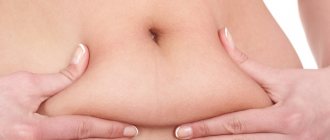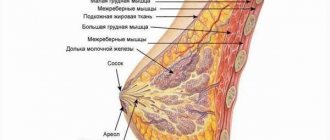About hoop, plank, squats and jumps
After giving birth, a woman who sets out to regain her shape is tormented by doubts about the safety of playing sports. The information on the Internet is contradictory and not always reliable, and it is not possible to contact a doctor with every question that arises. Online course specialists come to the rescue - they will answer all questions and offer a safe and effective training program.
Is it possible to spin a hula hoop after giving birth?
Immediately after giving birth, twirling a hoop is strictly prohibited. This is due to the fact that the muscles and internal organs have not yet recovered after pregnancy and childbirth - they are in a stretched state, weakened, and displaced. An early start to hula hoop training leads to the prolapse of internal organs, as well as to their even greater displacement. In particularly serious cases, internal hematomas may appear.
You can start training with a hoop only at a time when all organs have assumed their previous position and shape, and the muscles have become stronger again. This occurs around the fourth month after birth, although everything is individual.
Even 3-4 months after giving birth, women should not hula hoop if they have:
- gynecological diseases (cyst, etc.);
- problems with the vestibular system;
- diseases of the spine;
- inflammation of the gastrointestinal tract;
- repeat pregnancy.
Is it possible to do planks after childbirth?
The first few months after giving birth, even women who were actively involved in sports and practiced this exercise should not do a plank. Weakened muscles will not benefit from such a load, but will only do harm. If you start doing planks before the lochia ends, this will increase their duration and generally have a detrimental effect on the recovery process. With diastasis, the plank is also prohibited - it will only worsen the disease. Also, a contraindication to this exercise is a difficult birth with tears or cuts in the perineum - you must wait until the sutures have completely healed.
For most women, it is optimal to start doing planks six months after giving birth. Violation of the recovery period is fraught with problems with the back and pelvic floor muscles.
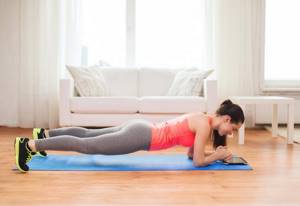
Is it possible to squat after childbirth?
Squats are also on the no-go list of postpartum exercises. Yes, this is truly the fastest and easiest way to pump up your butt and thighs. But if you rush into starting classes, this will lead to weakening of the pelvic floor muscles, prolapse of internal organs and problems with the reproductive and excretory system.
To restore your figure in the pelvic area, there are exercise options that are more suitable for young mothers. They are presented in the online course program. But you can start doing squats 6 months after giving birth - only then will they be beneficial with the correct technique.
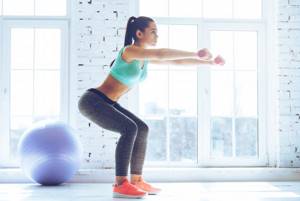
Is it possible to jump after giving birth?
Jumping in various variations can be started 2 months after birth, if it happened naturally. After a caesarean section, you will have to wait 12 weeks and get permission to exercise from your doctor. And also if there are no problems with the pelvic floor muscles.
Before you start jumping, be sure to warm up, otherwise there is a risk of injury. After finishing your workout, to consolidate the results, you should do a cool-down in the form of light, pleasant stretching.
It’s better to start exercising with light loads: jump at a calm pace for a short amount of time, until you get slightly tired. You need to increase the intensity of your training as you feel better.
What do we do?
- Impact the whole body at once!
- Repeat the exercise as much as we can!
- Focus not on comfort, but on heaviness just for you!
What do girls usually do wrong in the gym? I'm talking about those who go to a paid trainer or with their girlfriend for a cocktail, a chat, a selfie and a couple of squats.
YOU NEED TO TRAIN HARD! OTHERWISE THERE WILL BE NO EFFECT.
If you want to get results, nothing can stop you even at home. Essentially, gyms are for pros and those who want to be in the public eye. Mom needs to allocate only half an hour three times a week for herself.
So, girls, the more repetitions you do, the better. The harder it is for you, the more effective. The more your muscles hurt tomorrow and the day after tomorrow, the more proud you should be of yourself.
- Squats. We always start with them, of course, after the warm-up. Place your feet shoulder-width apart, arch your lower back slightly. This natural deflection must ALWAYS be maintained. Inhale and slowly lower yourself to a line parallel to the floor. The weight should be on your heels! As you exhale, stand up a little faster. From the calculation - we go down by three, we go up by one or two. Repeat at least 10 times, preferably 15. At least three approaches! If it’s too easy, pick up the child, put him on your shoulders and squat with him. Great fun for the whole family. That's what we do.
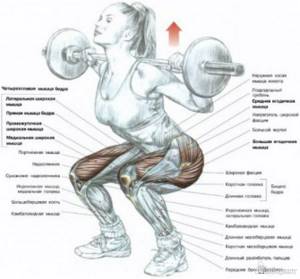
- Steps. Take a stable stool and alternately step on it with one foot and the other. Do 20 repetitions.
- Swing back and to the sides. Stand against a wall, chair or cabinet. Place your hands on the surface. Raise your leg back to an angle of 45-90 degrees. Lower, repeat 10-15 times. Then do the same for the second leg. Repeat the exercise, now raising your legs to the right and left.

- Vacuum. The best exercise for the abdomen. The human body has subcutaneous and visceral fat. The first one you see and lament, the second one hides around the internal organs and can become a real problem. Vacuum not only trains the internal stabilizer muscles, which cannot be strained even a little with other exercises, but also eliminates visceral fat. This is the favorite exercise of Arnold Schwarzenegger, the owner of the thinnest waist among bodybuilders.

Arnold next to Big Ronnie. You can immediately see the difference in the waist.
What should be done? Stand up straight, put your hands on your waist. Then lean forward a little and pull your stomach in tightly. The ribs should be covered with leather. Advanced exercisers can even massage internal organs with their abdominal muscles. Make a “wave”. I am just learning.





